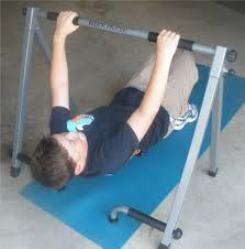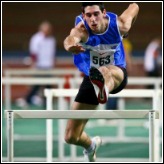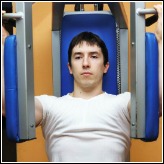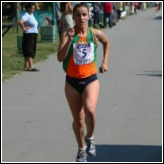Strength Training for Kids
Strength training for kids is highly beneficial. Like you, I am a big advocate of kids working out and getting much needed exercise. When this is done in an organised fashion, all elements of physical fitness can be introduced properly to the child.
Strength is just one of these elements of fitness but due to the potential health risk associated with all physical activity, we should all have more than just a little knowledge of how strength training affect kids.
Training to Train
Before the advent of video games and 24 hour televisions, kids use to run around, jump over barriers, climb trees and play piggy back games with their friends. In playing those games they get an enormous amount of exercise covering the full spectrum of fitness. More important to our discussion, the climbing, the jumping and the carrying, all helped to strengthen their muscles as part of that growing up process.
Unfortunately, many kids don’t participate in these play activities these days. And because of this, an important part of their physical development is stunted.
For many young people if they decide to participate in organised sports, their physical fitness level is below that of their more adventurous peers. As a consequence when they take up sport we first have to ”training them to train”.
I am going to make a number of assumptions:
- That you have come to this page because you have heard conflicting information about strength training for kids.
- That you are looking for some ideas to implement with youngsters you are working with.
- That you are looking for information on strength training for kids and not weight training for kids, which is a whole different subject.
So let me deal with the last point first. Weight training and strength training are two separate things. Let me explain, strength training is the effect you are looking for, weight training is the means or method (you choose) by which you can gain strength.
To be perfectly honest when it comes to strength building, our bodies don’t care whether we are using a medicine ball, a bucket full of sand, an elastic band or just plain body weight. All the foregoing activities will elicit a strengthening response to some degree in adults let alone kids.
So, now we have that out of the way…
Things you should know about kid’s bodies
- The best time for boys to optimize strength training is between 14-18 years and for girls 11-16 years. That being said, this does not mean that strength training can’t or shouldn’t be undertaken before these ages. All that the statement means is that at these times is the perfect window of opportunity for the development of strength training for kids. They will adapt better to any strength related stimulus during those favoured periods. More on that late…
- In the early years (8-11yrs) young people will respond positively to strength training without any visible signs (hypertrophy) that they are indeed strong. After strength training, kid will still look like the skinny little runts they have always been before they began training. This is the same for girls as well as boys. Most of the changes are being made to their nervous system, at a so called neurological level. Studies have shown that with strength training the first response to such training is an increase of motor unit activation (a motor unit is literally the engine of the muscle). Training seems to switch more of these on, and that’s why kids exhibit more strength without any increase in size.
- Kids’ ability to take advantage of training for sport is largely dependant on their maturation stage (the stages of development of the body) rather than chronological age (their actual age). So for example, you might have 2 young boys age 12 years, one could be following the normal pattern of growth, while the other may have already hit puberty and have ten times as much testosterone coursing around his body. The second child will have already begun his “growth spurt” (the scientific term for this is peak height velocity, but let’s keep it simple eh?). The readiness to cope with certain strength training activities will be markedly different for the two kids.

You will need to be careful of overloading the youngster during the growth spurt years. This is because growth occurs at the ends of the long bones of the legs and arms. As this happens the attachments of tendons and ligaments at these points are delicate at best. The sites where tendons and ligament are attached, by necessity must be pliable to accommodate movement caused by the growth of the bone. If too much load is applied, you can imagine the potential scenario that strength training for kids can have on a developing body!!
So, just be careful!!
Benefits of strength training for kids
The benefits of strength training for kids are many. For example:
- If nothing else, it increases the strength of the child's muscle
- It will help to protect the child from sports related injuries
- Of course you will expect to see an improvement in performance in any and every sport or physical activity
- It strengthen their bones - research studied are very positive on this point
- Help your child to maintain a healthy weight
Guidelines to help you develop programs for strength training for kids
A lot of times you go into gyms and you see kids doing scaled down versions of adult training. This is so wrong!
Don’t get me wrong, there is absolutely nothing incorrect in having young people perform strength training. However, there is clear evidence available which suggests the type of activity that is appropriate for young people at certain stages of their development. So, here are some guidelines that I have adopted from some of these studies. These can be used to develop your strength training programs and strategies for kids.
- 6 to 9 years old - Strength training during this phase should include exercises using the child’s own body weight, medicine ball and Swiss ball exercises, partners and elastic bands9 to 11 years old - Strength should be developed by medicine ball, Swiss ball and own body weight exercises as well as hopping and bounding exercises.
- For girls there are two windows of opportunity to maximize strength development. One is immediately following the beginning of their growth spurt (about 12yrs) and the other is at the beginning of menstruation.
- The window of opportunity for boys is about 12 to 18 months after the beginning of their growth spurt (about 13-14yrs). This is the period where a more traditional approach to strength training such as weight lifting can be followed in their training programs.
More Guidelines...
- You should always have the youngsters perform a warm up and a cool down.
- When using traditional strength training methods such as weight lifting, you should keep the load light. Have them use a weight that they can perform more than 8 repetitions in a set.
- Always stress good lifting techniques and only allow them to lift a load where proper technique can be executed.
- You should schedule strength training workouts 48 hours apart. This allows muscle to recover and adaptation to take place.
And finally, make it fun – you don’t want to bore the child out of the sport or activity.
Sign Up For The Latest Track And Field News And Improve Your Athletic Performance!
From
"Strength Training for Kids" Back To "Faster,
Stronger, Better – Your Shortcut To Improved Athletic Performance"
Learn more about strength training exercises







